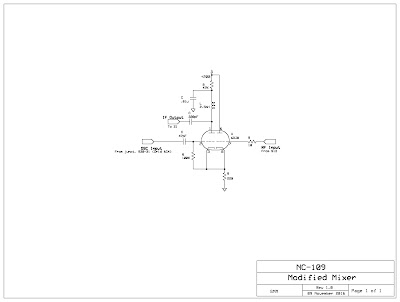A couple hours into the NC-109 and it's starting to show. Sometimes, it's surprising how much difference just a little cleaning-up can make - this thing is filthy! Fortunately, the ancient nicotine and goo isn't putting up too much of a fight.
Electronically, I haven't run into any major problems, but did find a surprise - more on that later.
Initially, the "A" (AM Broadcast) band was dead, and in troubleshooting, I fell victim to the habit of "overthinking" the problem. Initially, I suspected a defective component - dirty switch contact, open oscillator coil, or something along those lines, so I spent quite a bit of time checking components. When I measured the L and C in the oscillator circuit, I discovered that the inductor was out of range and the problem was simply alignment. I didn't expect that to be an issue because the rest of the bands were dead-nuts on, but the "A" band coil had just been screwed down a few turns too many. Easy fix!
In the process of troubleshooting that problem, though, is where I found the surprise: A previous owner had extensively modified the mixer - the original 6BE6 had been replaced by a 6DJ8. That number didn't ring a bell, so I looked it up and found it to be a dual-triode. A-HA! I quickly drew the circuit as it was installed, and confirmed the circuit as being the "Keats Pullen" mixer that I've used in some of my homebrew projects:
Since I know that this circuit can work quite well - and it seems to be in this rig - I think I'm just going to clean up the workmanship. As you can see below, it's a little haywired:
Another modification that had been done - and I un-did - was installation of a 50uF cathode bypass on the audio PA. According the the schematic in the manual, the cathode is unbypassed, and it was pretty obvious that the capacitor wasn't installed by the factory. I imagine that the intent was to juice up the gain of the stage, and that it did, but it significantly increased the residual hum, especially when using headphones. The stage has plenty of gain and sounds great without it, so: Bye bye.
Otherwise, I cleaned the switches and controls, and cleaned/lubricated the bearings in the tuning caps, which were quite stiff. I may have to give some attention to the dial cords as well; the springs are stretched (probably from cranking the stiff caps) and the bandspread slips. Fortunately, the stringing scheme is pretty simple, so this isn't as big a deal as it could be.
That's all for tonight!



No comments:
Post a Comment